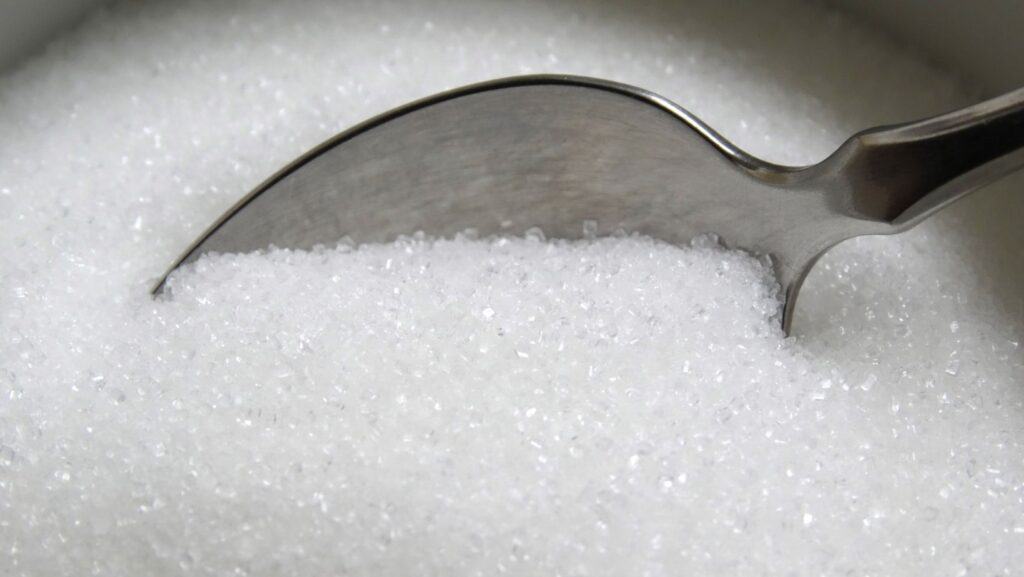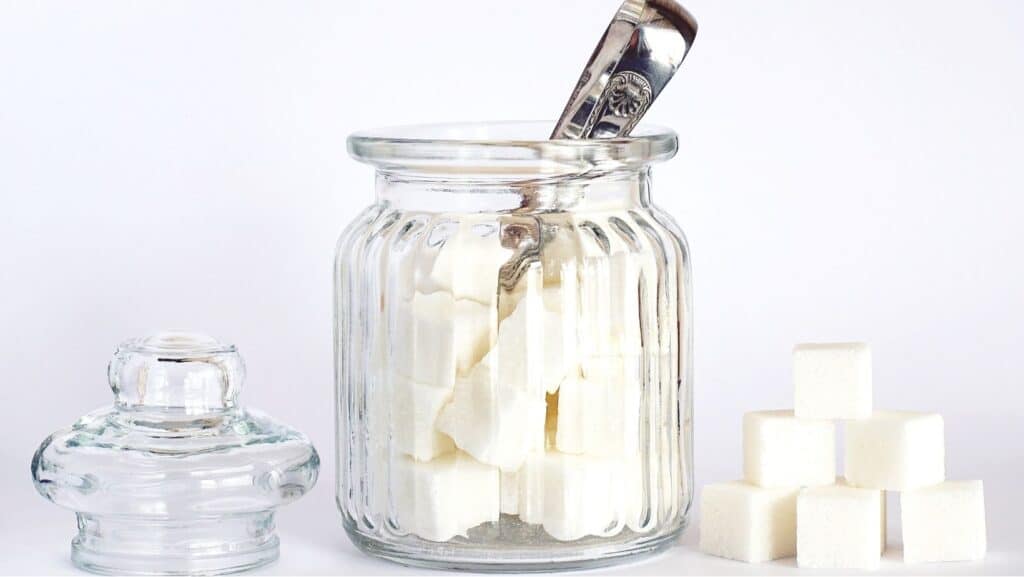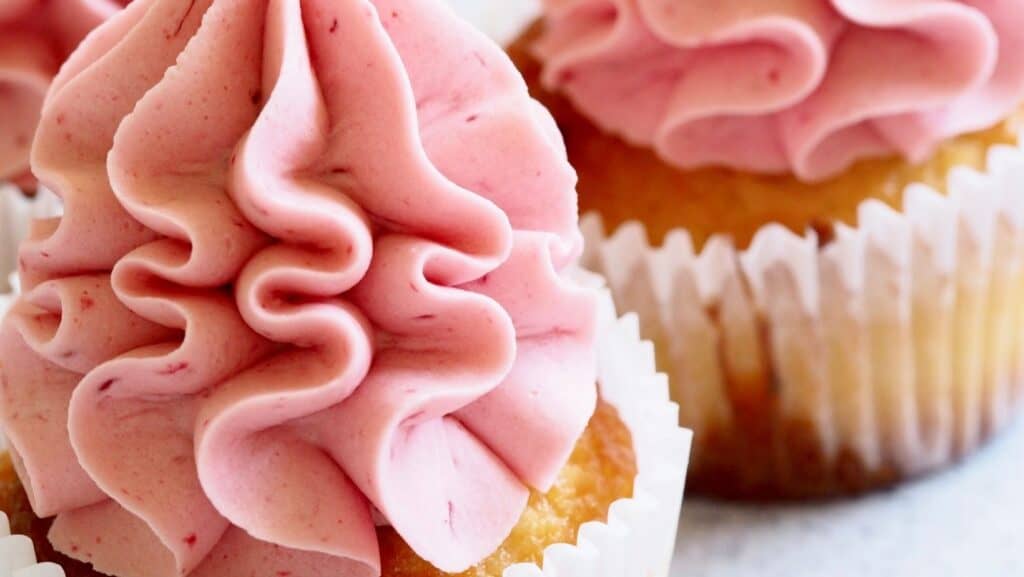This is a simple guide to the Different White Sugars used in baking and cooking. Ranging from Granulated Sugar, Caster sugar, and Icing Sugar, it is the most commonly used sweet ingredient in the culinary world.

Sugar is a general term referring to crystalized sucrose that is derived from either sugar cane or sugar beets. Regardless of the source, the end result tastes the same.
What is the difference between Granulated Sugar and Caster Sugar? Is Caster Sugar the same as icing sugar or powdered sugar/confectioners sugar? These are questions every new home cook wonders when they first start baking.
We don't always have the right ingredients to hand when we want to bake and wonder if replacing caster sugar with granulated sugar or vice versa, will give you the same successful results.
I can tell you that you will get good results if you take a few minutes to read and learn a little more about the difference between some of the refined white sugars.
What is Refined White Sugar?
Refined white sugar is a result of Molasses and any impurities being removed from its original source (sugar cane or sugar beets) through a manufacturing process. It is then cleaned and washed to whiten it. All the flavour has been removed so all that is left is the sweetness. All forms of sugar need to be kept free from moisture in an airtight container or it will clump together and become lumpy.
The resulting different crystal size determines its use in cooking and baking. The most popular different types of sugar used here in the UK are;
- Granulated Sugar - Often used to make sugar syrups as it dissolves more easily in liquids.
- Caster Sugar - Most widely used in cake baking and making meringues.
- Icing Sugar - Widely used to make Buttercream or dusting over cakes.
Once you learn what each sugar is used for, and how you can interchange them, will give you better baking results.
What is Granulated Sugar?
Granulated sugar is refined white sugar with medium-sized crystal grains compared to that of Caster Sugar. It is ideal for making a sugar syrup and because of the size of the grain and surface area, it dissolves more easily in liquids reducing the possibility of crystallization. It is also less likely to have impurities in which often contribute to crystals forming when making a sugar syrup or caramel brittles.
You can use this medium-grained sugar in cake baking, but you will need to beat the butter and sugar together for a little longer than you would if using Caster Sugar. This ensures all the sugar grains have dissolved or you risk having brown sugar spots in your cakes after baking.

Often found in the best tearooms, Sugar Lumps/Sugar Cubes are granulated sugar that is formed with the addition of moisture. It's where the expression, 'one lump of two' comes from.
Granulated sugar has an almost infinite shelf-life and is more often the type of sugar used to make Jam, with a little help from added pectin.
What is Caster Sugar?

Caster sugar, often called Baker's Sugar or Superfine sugar is refined white sugar. It is mostly used to make Cakes, in general Baking, and making Meringues. Originally, it was designed to be used in a sugar caster (shaker) hence the name.
It has a smaller sized crystal/grain than Granulated sugar but isn't quite as fine as Icing sugar or Powdered Sugar/Confectioners Sugar (USA).
When making cakes, beating the butter and sugar together is made much easier and quicker by using Caster sugar. This is because of the smaller crystal grains. It's ideal for dusting the top of a simple Victoria Sponge Cake or scattering over Cookies, Muffins, Brownies or Cookie Bars.
When used carefully, caster sugar will make a wonderful Caramel Brittle with the option to add crushed nuts to vary the flavours.
How to Make Caster Sugar
The best alternative to caster sugar is to make your own by blitzing Granulated sugar into smaller crystal grains using a food processor or blender. For best results, pass the blitzed sugar through a sieve to remove any remaining large granulated crystals.
Don’t over blitz or you could eventually create icing sugar. If this happens there’s no need to throw it away, just keep it in a sealed container and use it as icing sugar. Just make sure you pass it through a fine sieve before using it.
What is Icing sugar?
Icing sugar/Powdered sugar (USA) is also known as Confectioner’s sugar. It’s ground much finer than caster sugar and contains between 3 & 5 percent cornflour/cornstarch. Which is an ani-caking agent to help prevent clumping and keep the finely ground sugar flowing smoothly. It dissolves really easily in liquids.
Icing sugar has many uses. A dusting of icing sugar adds a little sweetness to some sharp-tasting fruit such as gooseberries and citrus fruits. You can bring a plain cake to life with a dusting of icing sugar.

You can make buttercream by mixing icing sugar with softened butter at a ratio of 2:1 eg 500 grams of icing sugar to 250grams of softened Butter. This produces an amazingly sweet filling or topping for cakes like this Vanilla Loaf Cake. Add a little cream and Homemade Vanilla Extract for extra flavour and creaminess.
Add a few drops of coloured gel or coloured powders to the mix and create some wonderful tones and shades. Or you can buy icing sugar in many different flavours ranging from Vanilla to Passionfruit and Lemon to Chocolate Flavoured.
How to Make Homemade Icing Sugar.
Simply blitz either caster sugar or granulated sugar in a food processor until you have a super fine powder consistency. To ensure the finished result is fine enough, pass it all through a fine sieve. Blitz the remaining sugar again if needed, or keep in an airtight container to use in your usual baking.
TIP: Always sift your icing sugar before using it to avoid any lumps forming. This is essential when making buttercream.


Jacqueline McDiarmid
Thank you for this! Really interesting.